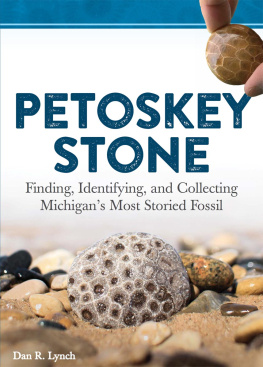

ACKNOWLEDGMENTS
Thank you to my wife, Julie Kirsch, for her constant support and patience throughout all of my book projects, and to my parents, Bob and Nancy Lynch, for their guidance. Additional thanks to Bob Lynch for helping find and polish specimens. I would like to also thank Bob Wright and Dean Montour for providing specimens and information.
All photos by Dan R. Lynch unless otherwise noted.
Specimens on courtesy Bob Wright
Specimens on courtesy Dean Montour
Specimen on courtesy Alex Fagotti
Pictured jewelry on courtesy Bob Wright
Used under license from (top)
All illustrations and maps by Dan R. Lynch
Cover and book design by Jonathan Norberg
10 9 8 7 6 5 4 3 2 1
Petoskey Stone
Copyright 2019 by Dan R. Lynch
Published by Adventure Publications
An imprint of AdventureKEEN
330 Garfield Street South
Cambridge, Minnesota 55008
(800) 678-7006
www.adventurepublications.net
All rights reserved
Printed in China
ISBN 978-1-59193-841-5 (pbk.); ISBN 978-1-59393-842-2 (ebook)

TABLE OF CONTENTS
THE MICHIGAN STATE STONE
Since June 28, 1965, a peculiar brown rock has represented Michigan as its state stone. Called Petoskey stone, this fossil-bearing limestone represents the rich history of ancient Earth as much as it does the identity of modern-day Michigan. Each pebble, found in the waves and sand on the shores of Lake Michigan and Lake Huron, is a relic from an Earth that we wouldnt recognize: an Earth with seas that teemed with life, while little more than fungi and primitive plants ruled the land. But the coral preserved in todays Petoskey stone didnt merely just exist during this period of timeit helped define it, contributing to the enormous coral reefs that formed the backbone of the oceans. These early reefs were a haven for life, places where evolution could occur relatively swiftly, and the coral in Petoskey stone not only helped to support much of the burgeoning marine ecosystem during this critical point in history but also the development of life as we know it. While Petoskey stone is rightly famous as a collectible, many who seek it today may not realize how it contributed to making the Earth a more hospitable place for billions of species that followed it, including us.
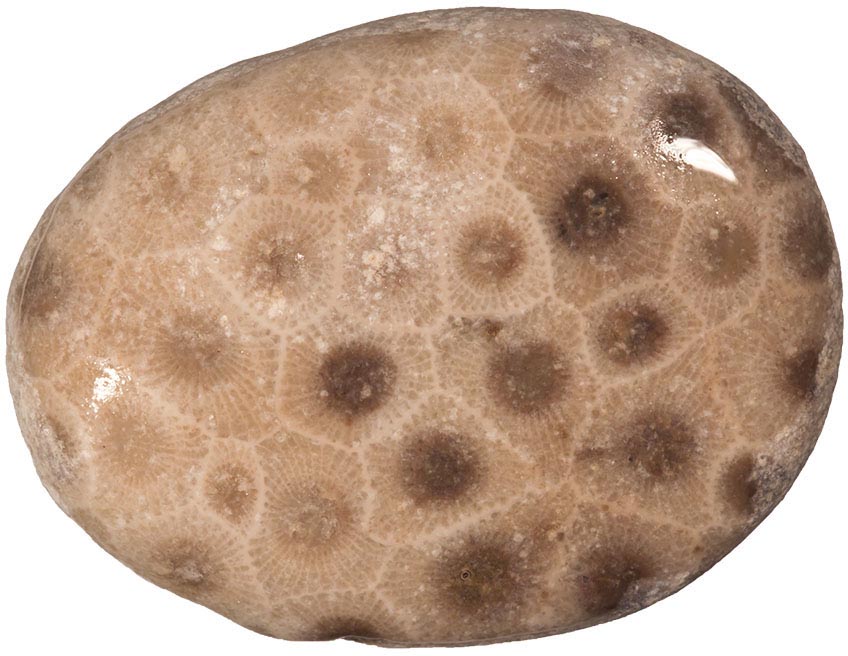
PETOSKEY STONES, AND HOW THEY FORMED
Petoskey stones have long been easy to find in Michigan. The Little Traverse Bay, where the highest concentration of Petoskey stones are found, is a beautiful natural area that has drawn in collectors for many years and offered them beautiful water-worn specimens of their own.
But while finding them may be a fairly simple matter, answering the question of what is a Petoskey stone? is a little more complex. With over 400 million years of history, theres a lot to know about the little hexagons trapped in the rock, and it all starts in the ancient seas of Earth. In this section, well explore the deep history of this enigmatic stone and how it came to be.
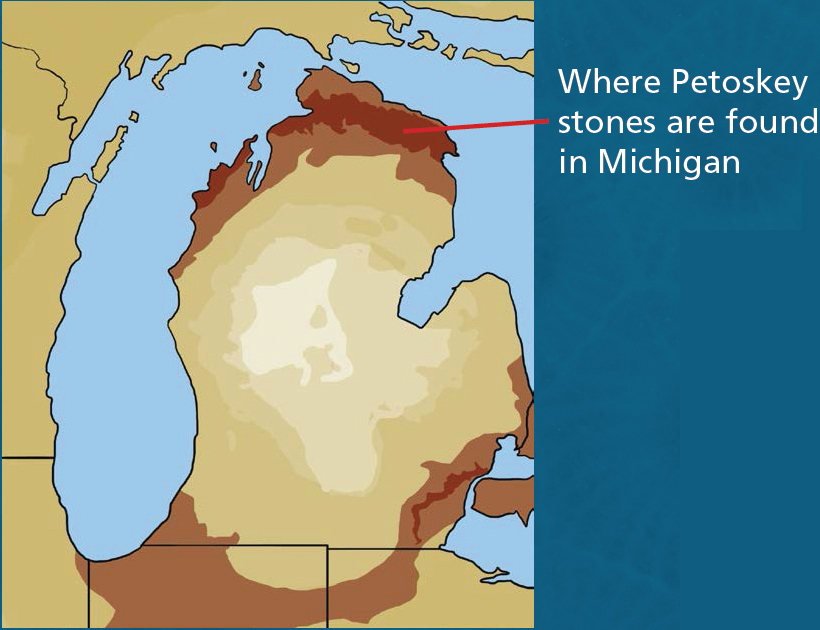
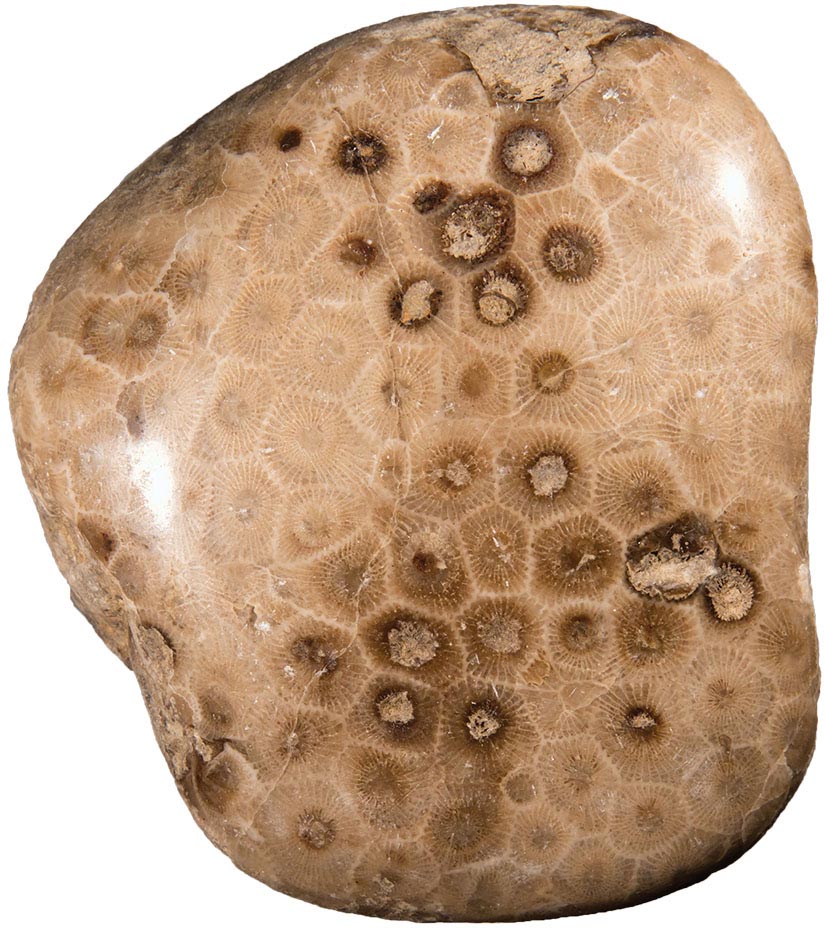
Specimen courtesy of Dean Montour
WHAT IS PETOSKEY STONE?
Petoskey stone is undoubtedly Michigans best known fossil, famous for its enigmatic mosaic-like pattern caused by the remains of an ancient coral species preserved in limestone. It is found most often in the vicinity of the Little Traverse Bay Area, particularly around Charlevoix and the town of Petoskey, from which the stone gets its name, but the popular collectible can be found all across the northern portion of Michigans Lower Peninsula.
Until recently, the precise identity of the coral species preserved in Petoskey stone was unclear. For some time, scientists have known that Petoskey stone is a fossil remnant of corals belonging to the genus Hexagonaria, a long-extinct group of corals that developed hexagonal, or six-sided, patterns. These corals thrived in Earths shallow seas during the Devonian Period, which started approximately 419 million years ago. But it wasnt until 1969 that the primary species preserved in the rock was identified as Hexagonaria percarinata, an ancient coral found in rocks in several places in the world, but nowhere as plentiful as in Michigan. Appearing tightly packed together, the hexagonal shapes each represent an individual organism within the once-living coral colony. Each hexagon is segmented, has a gauze-like texture, and often has a central darker spot.
Hexagonaria percarinata, typically shortened to H. percarinata, is a scientific name that will be repeated throughout this book; a coral fossil is only an official Petoskey stone if it contains that specific species. But that distinction isnt important to every collector, as there are many corals in the Hexagonaria group, and most Hexagonaria fossils from the region share similar patterns and features and formed in the same rock bodies. Instead, to many people, any fossil find is exciting, as they all represent the rich and deep history of life in Michigan and make for beautiful keepsakes.
PETOSKEY WITHIN SOUTHERN MICHIGAN
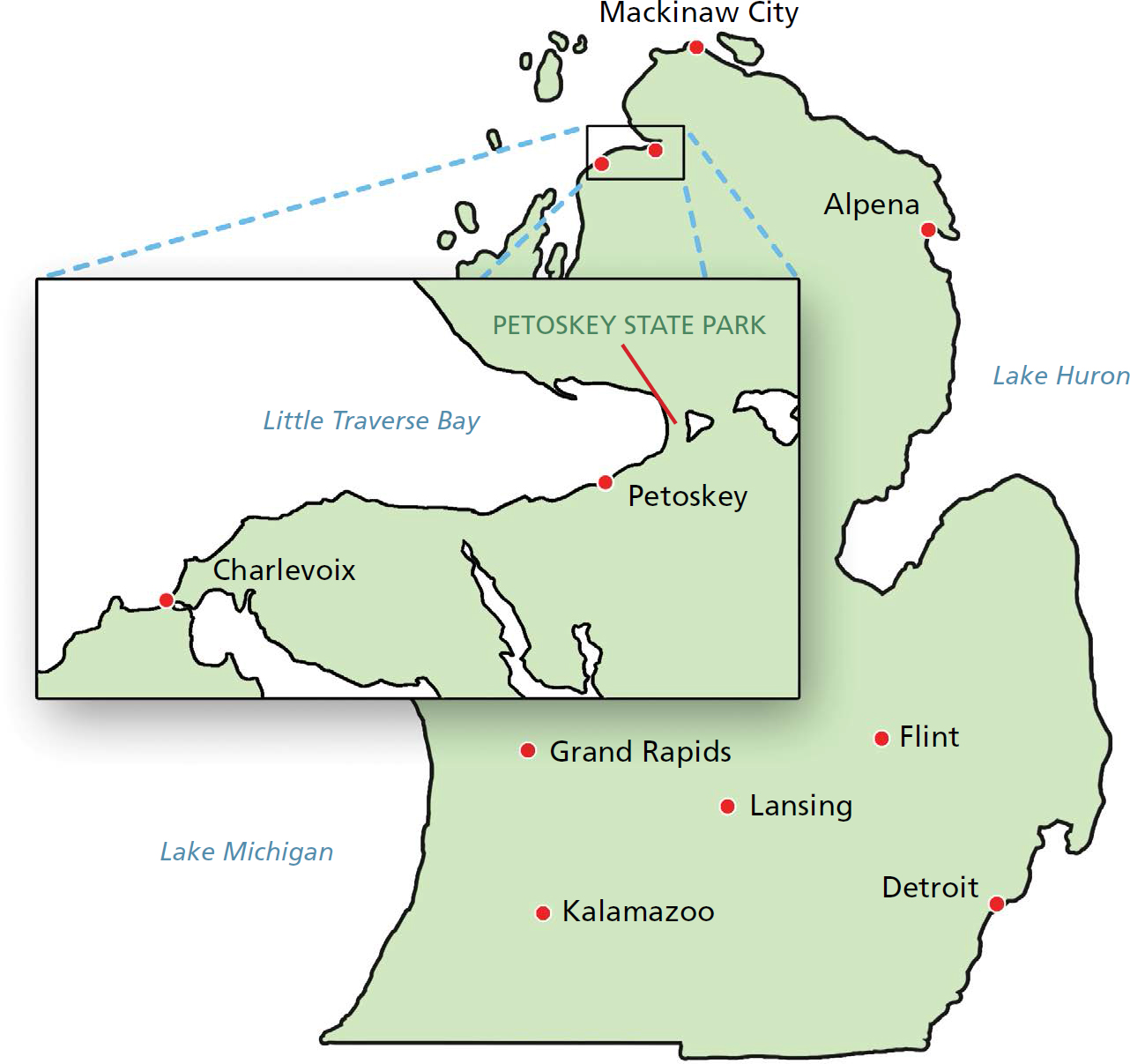
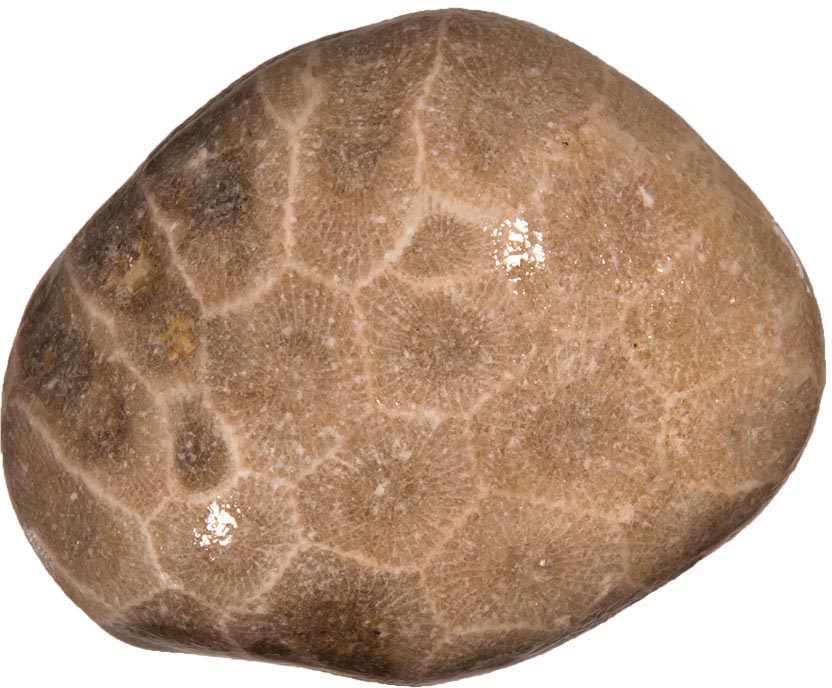
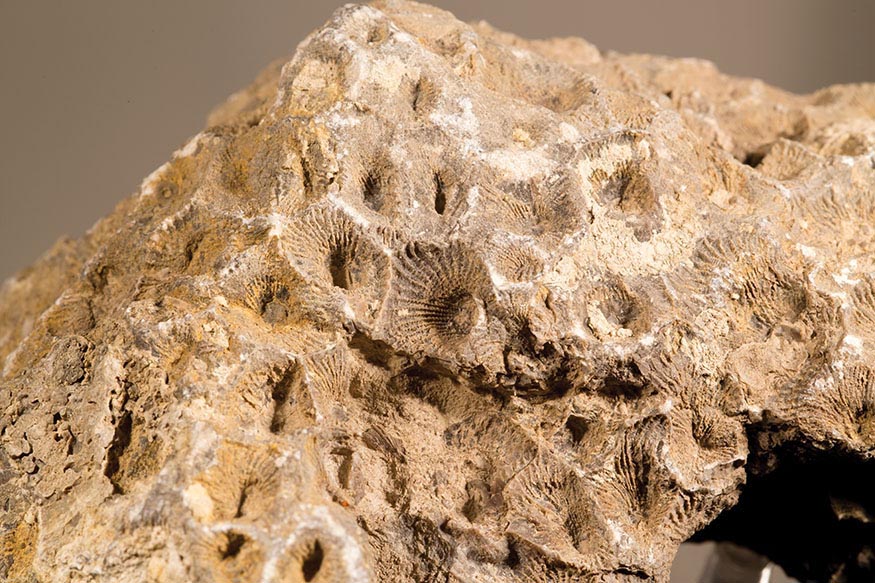
Most Petoskey stones are found loose in surface gravel or sand; theyre found as weathered, rounded stones. Less weathered specimens appear more ragged and rough, and these better represent the coral as it originally grew.
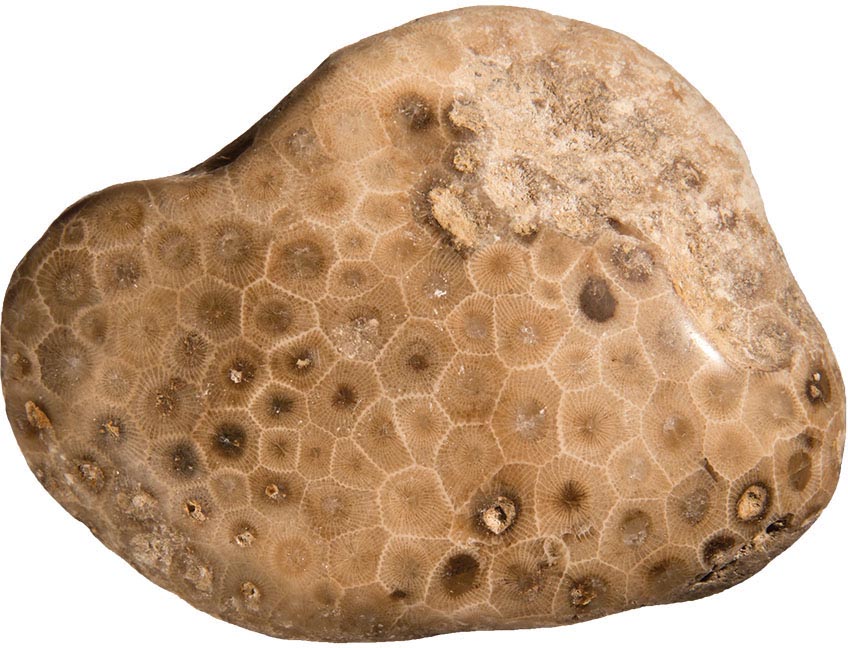
Petoskey stones are known for their tightly packed, repeating patterns of hexagons. Like most other examples of limestone, they are usually brown, tan, or yellowish, and fairly soft, yet will take a good polish, as shown by this exemplary specimen.

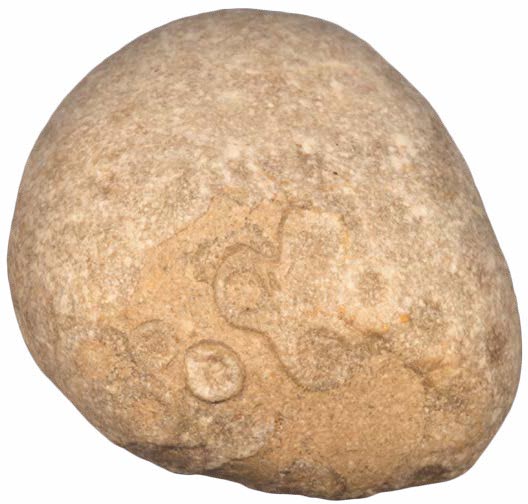
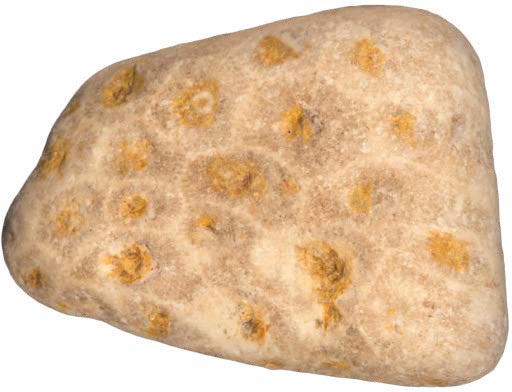
Next page
